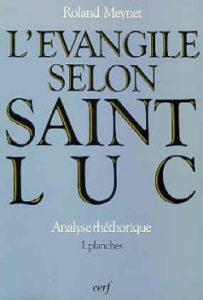
By the method it uses, the rhetorical analysis, this commentary is completely new. It is not a work of compilation which gives the last state of the research, in particular on the history of the text. It is a synchronic study in a new way study which, at a new cost, seeks to discover the way in which Luke “carefully composed” his gospel. In order to better understand its meaning.
In the first volume, in more than 200 plates, the text of the Gospel is rewritten in such a way as to visualize the way in which it is composed, at the level of passages (pericopes) and sequences (or groups of passages). All the resources of computer word processing have been used to show, in the clearest way possible, the rhetorical organization of the text. The French translation of Luke’s text respects the form of the original.
In the second volume, the commentary is organized in three parts: analysis of the composition of the texts, interscriptural references when necessary, and finally interpretation. This approach is followed at the levels of passages, sequences (and subsequences) sequences), sections (and sub-sections), and finally the book.
A final part discusses the major methodological problems of rhetorical analysis and sets out the conditions for a scientific elaboration of Luke’s stylistics. This first rigorous application of rhetorical analysis to the third gospel
brings unsuspected light on the work of Luke, whose reading it renews profoundly renews the reading of Luke’s work.
